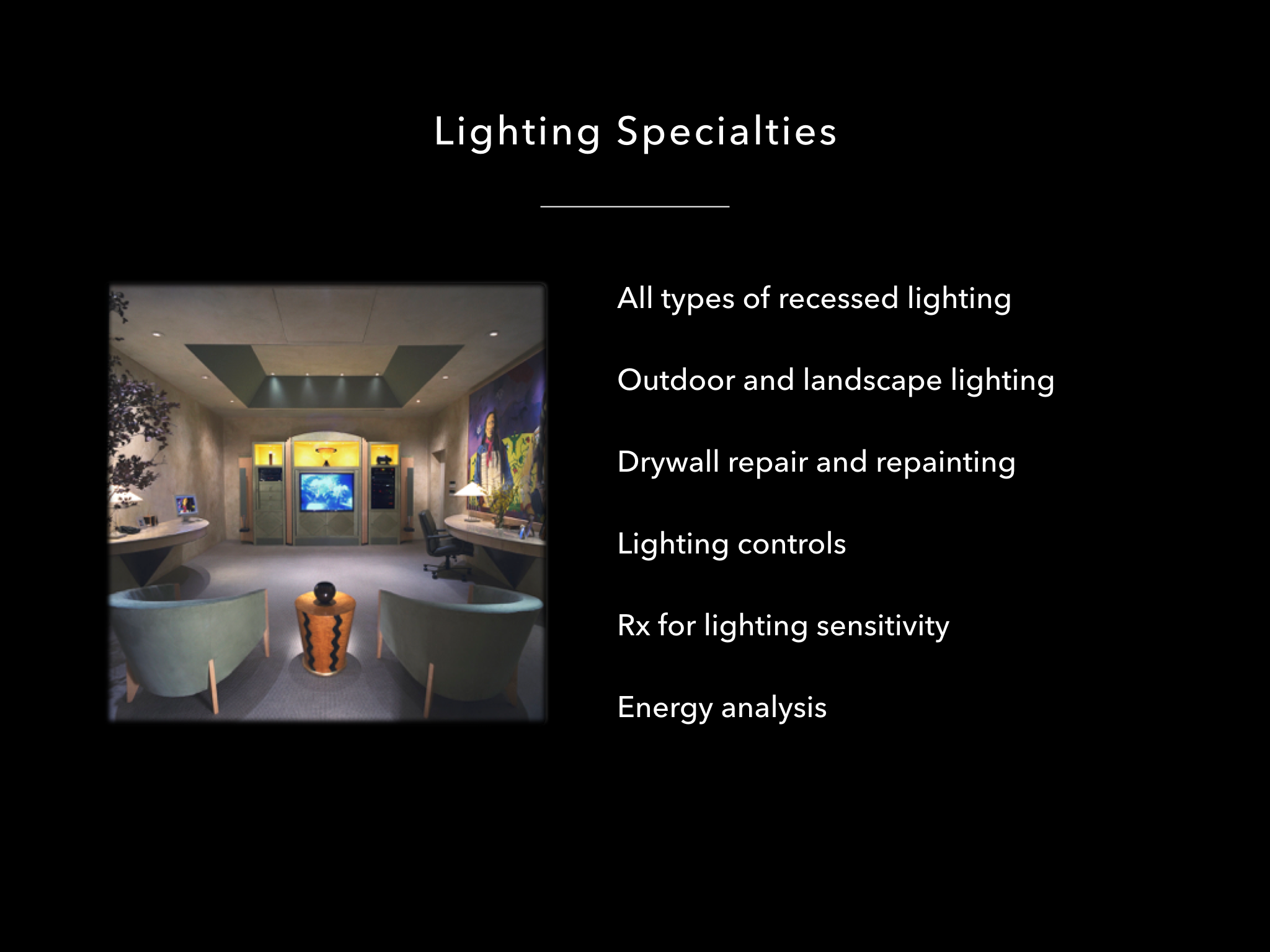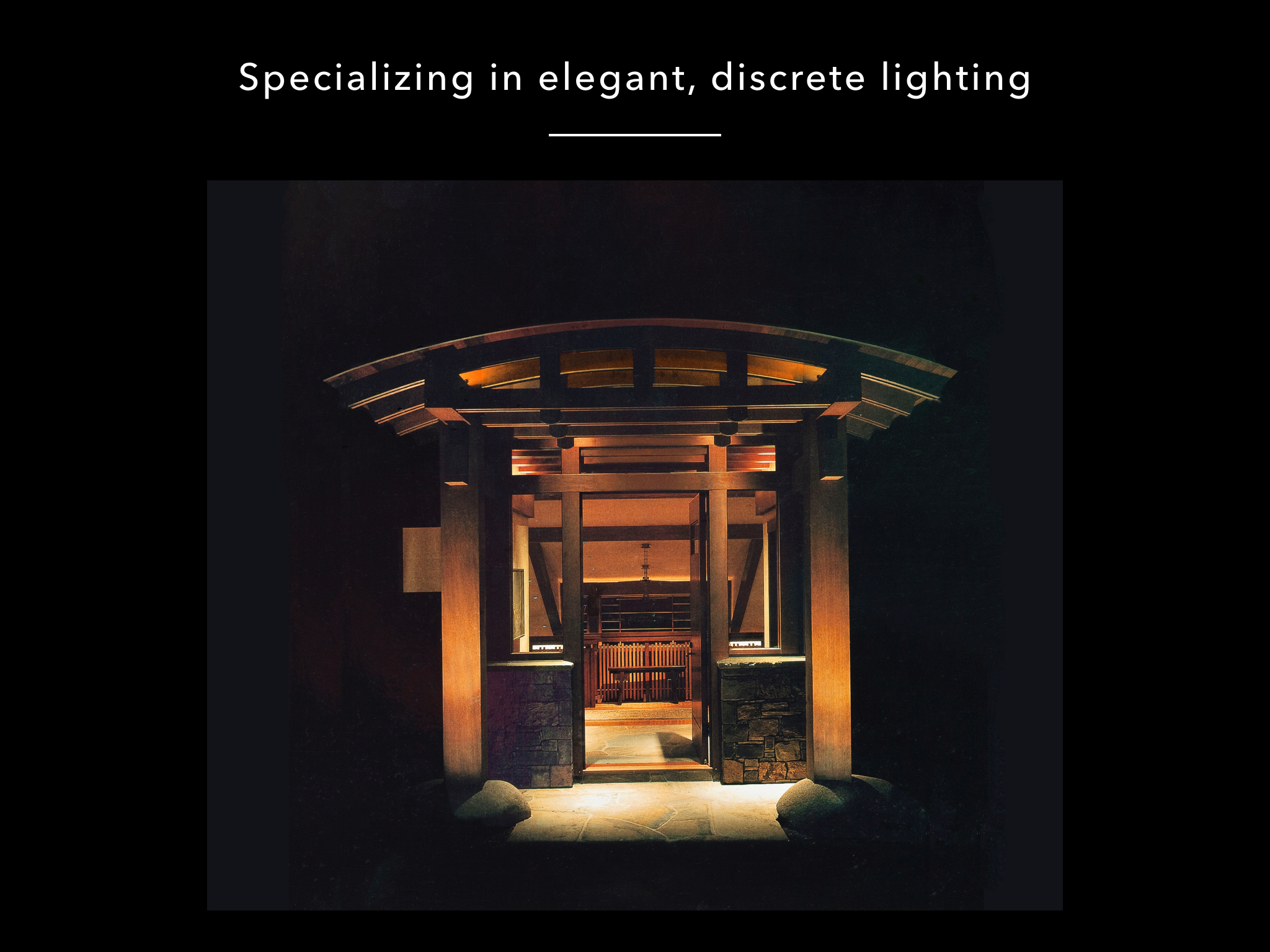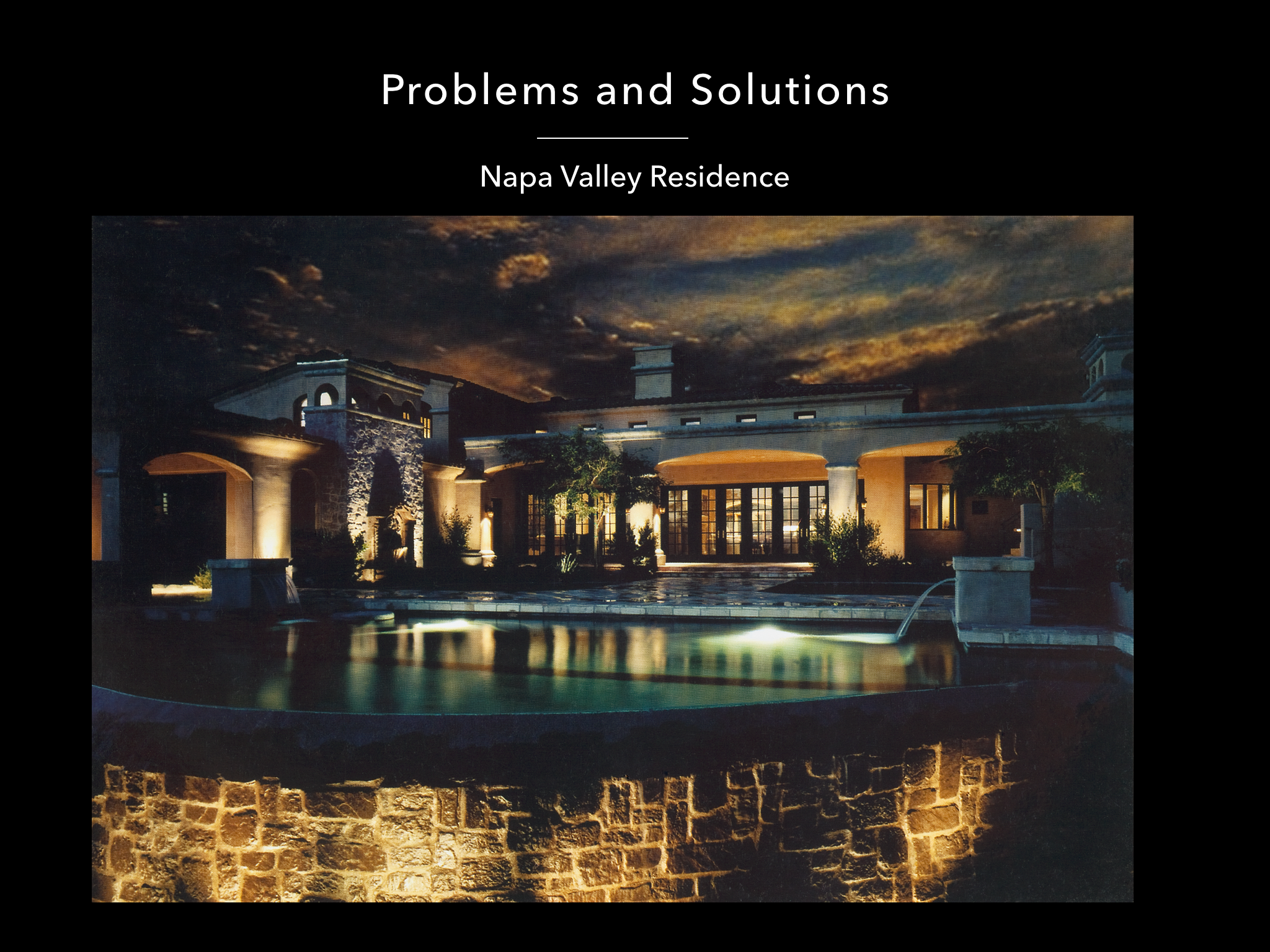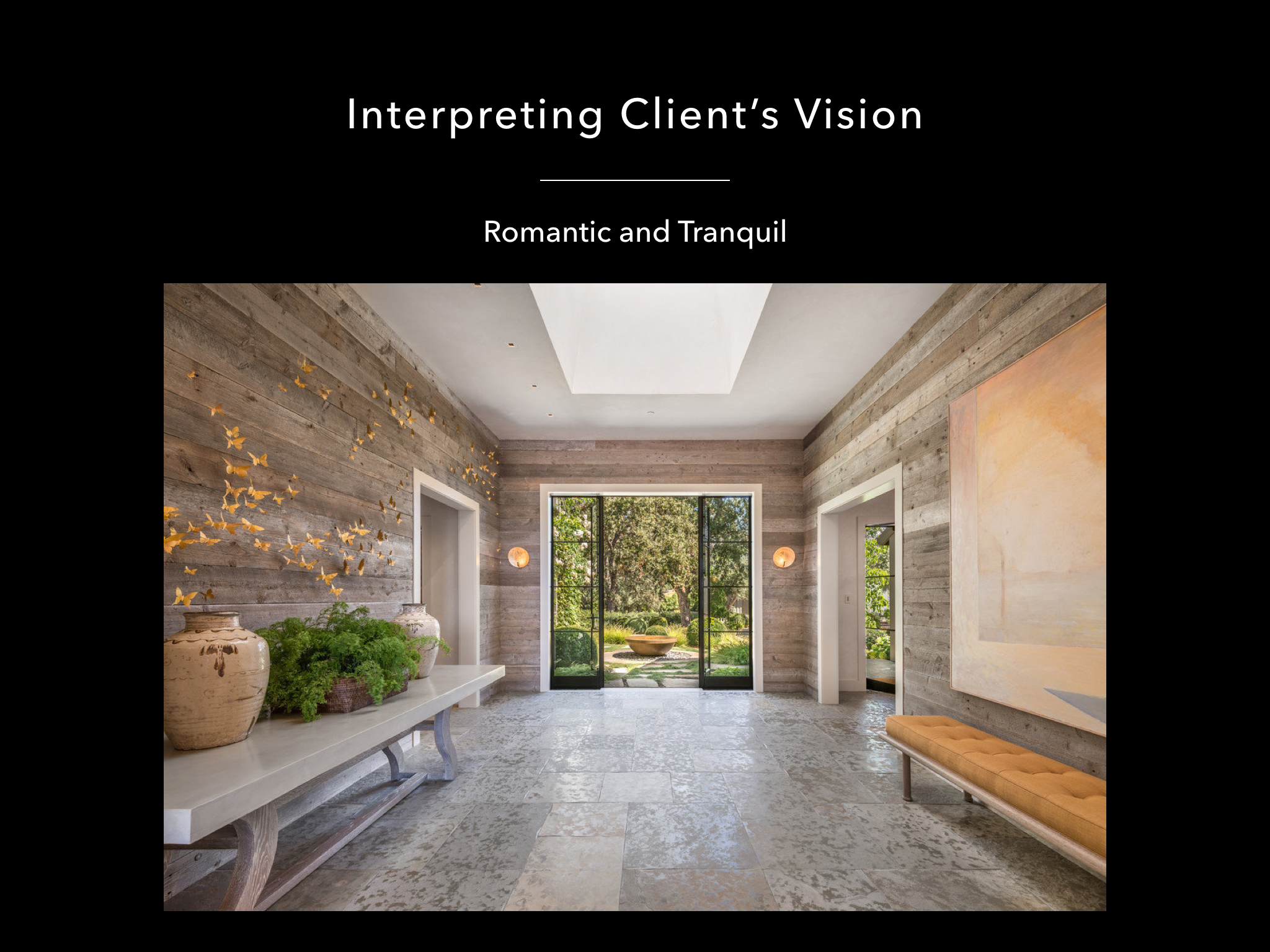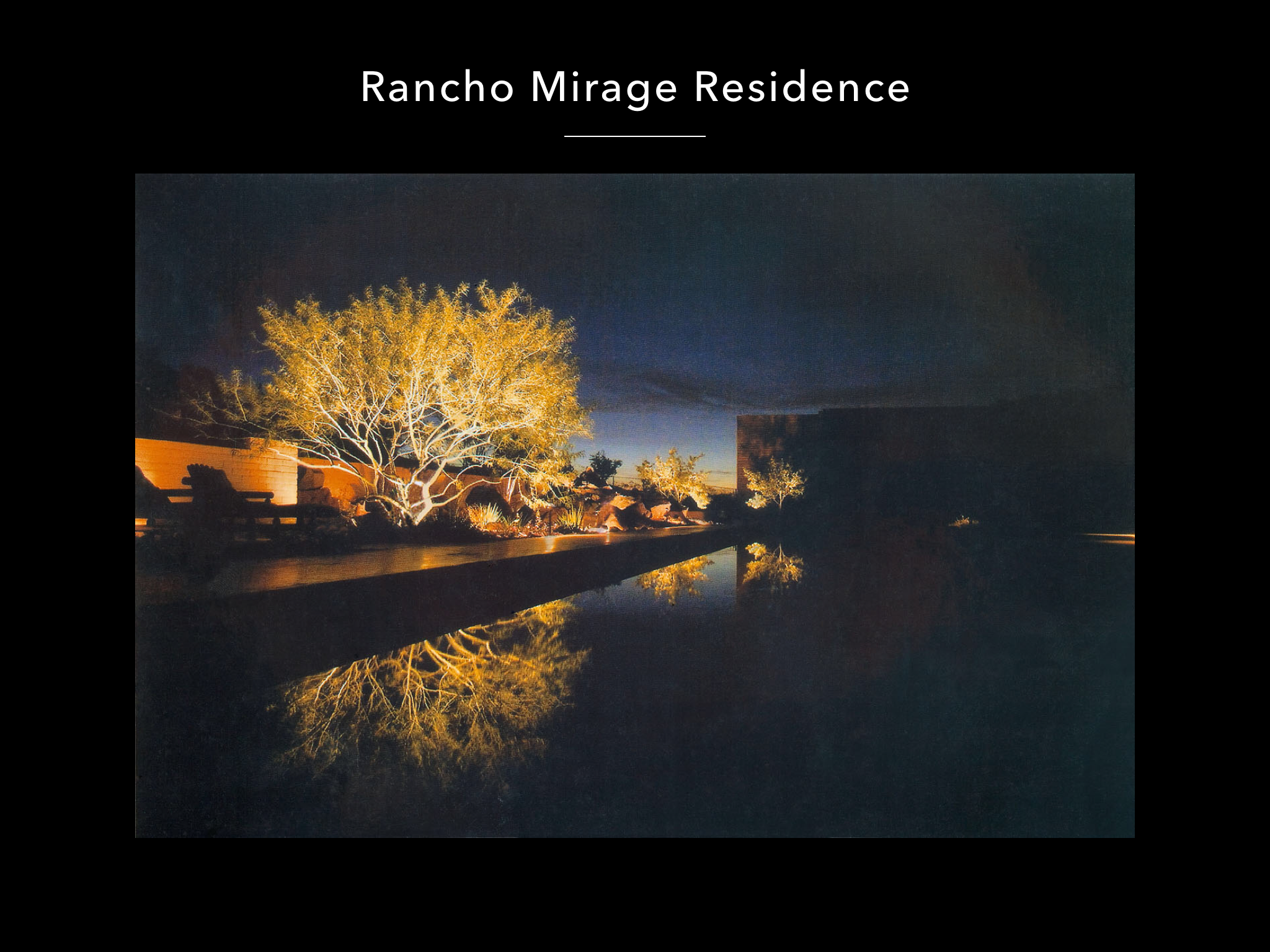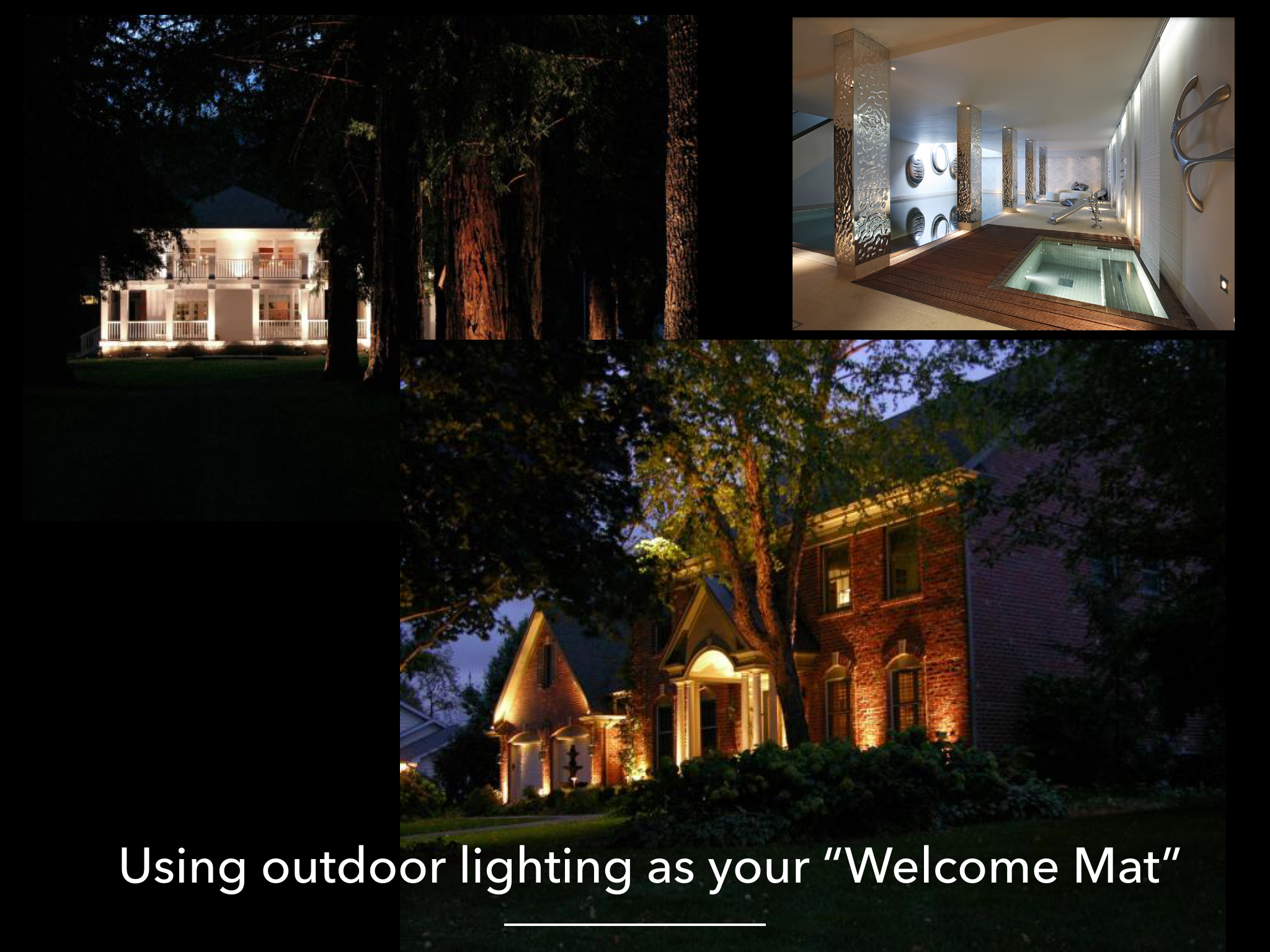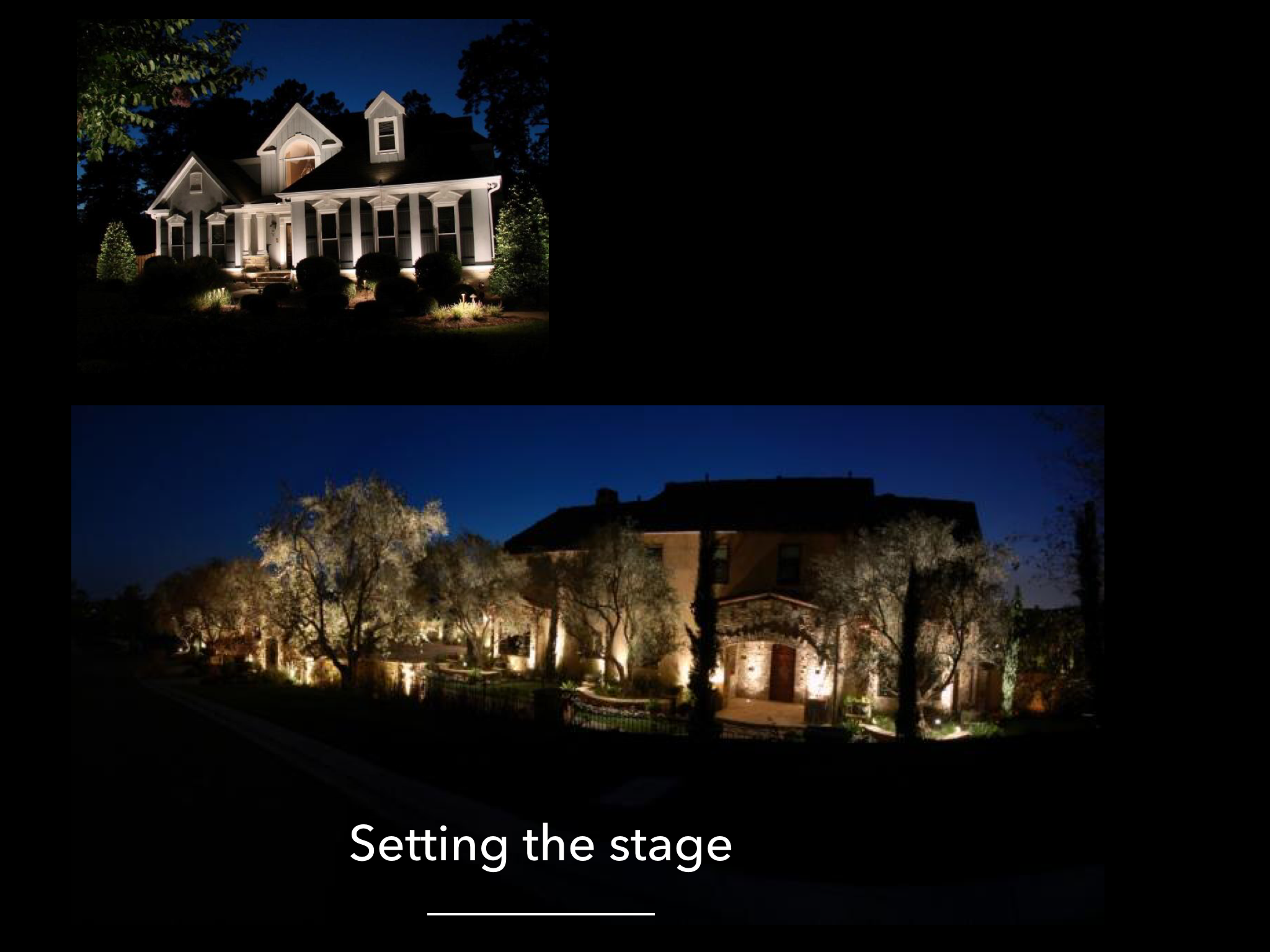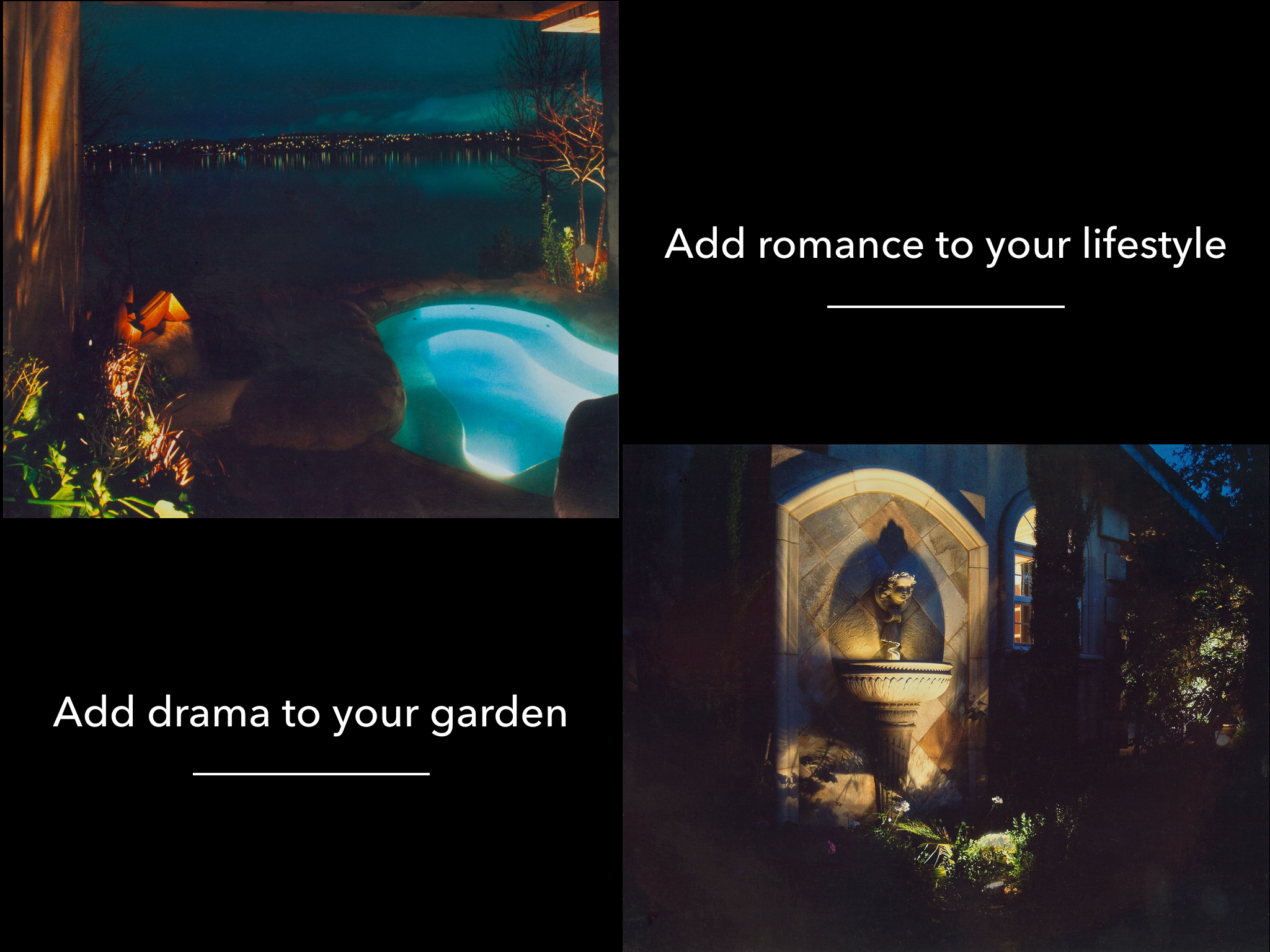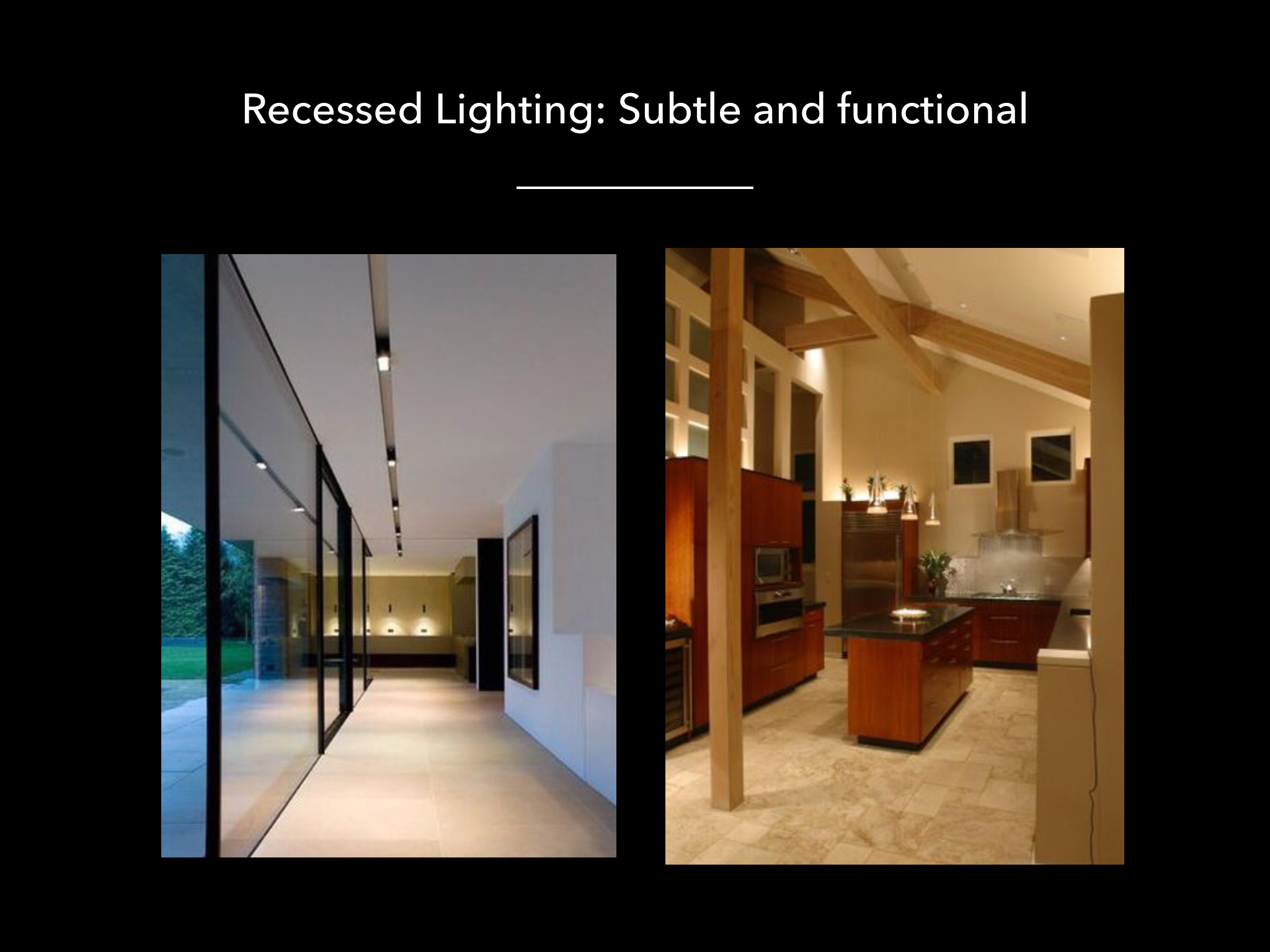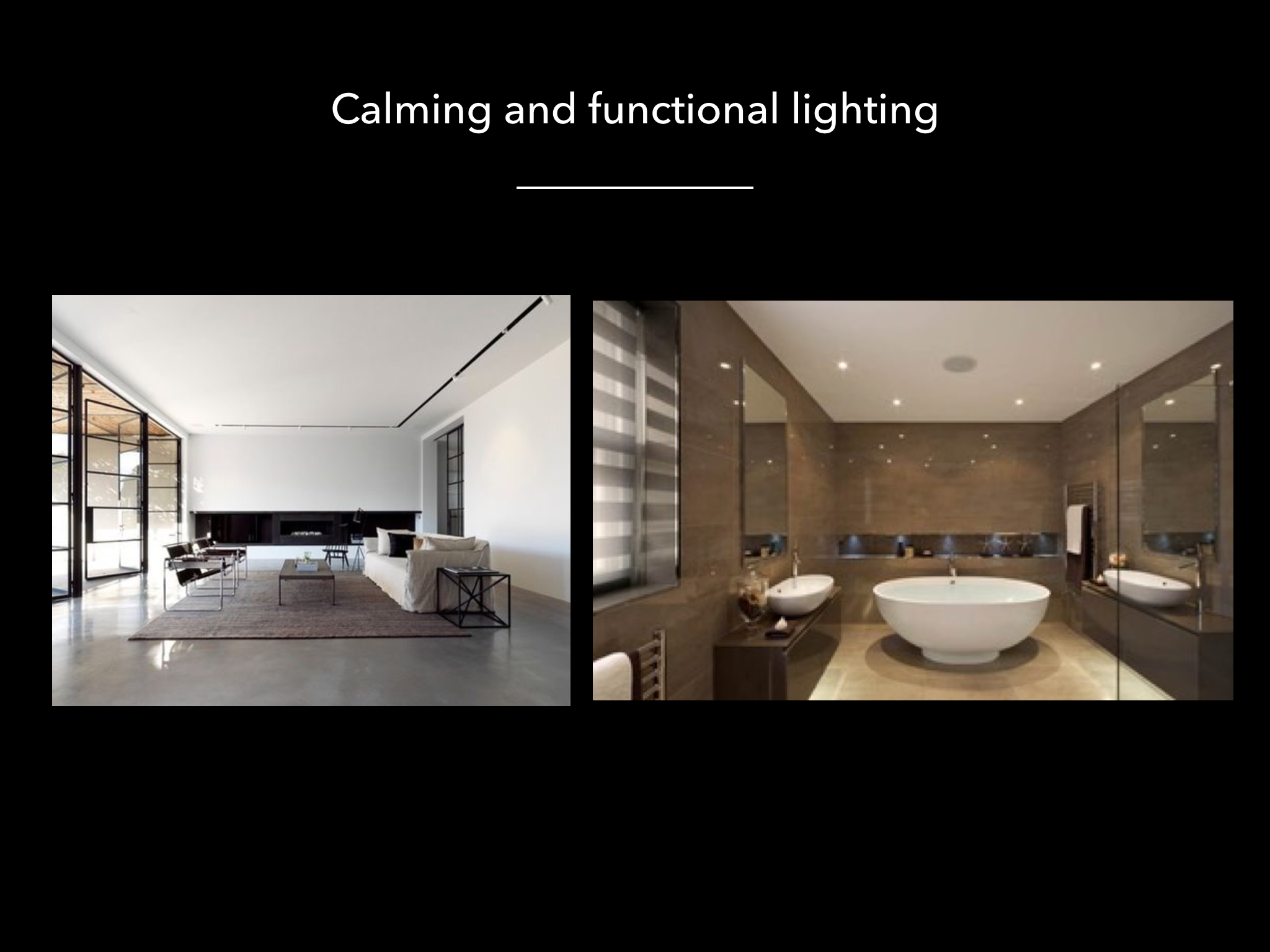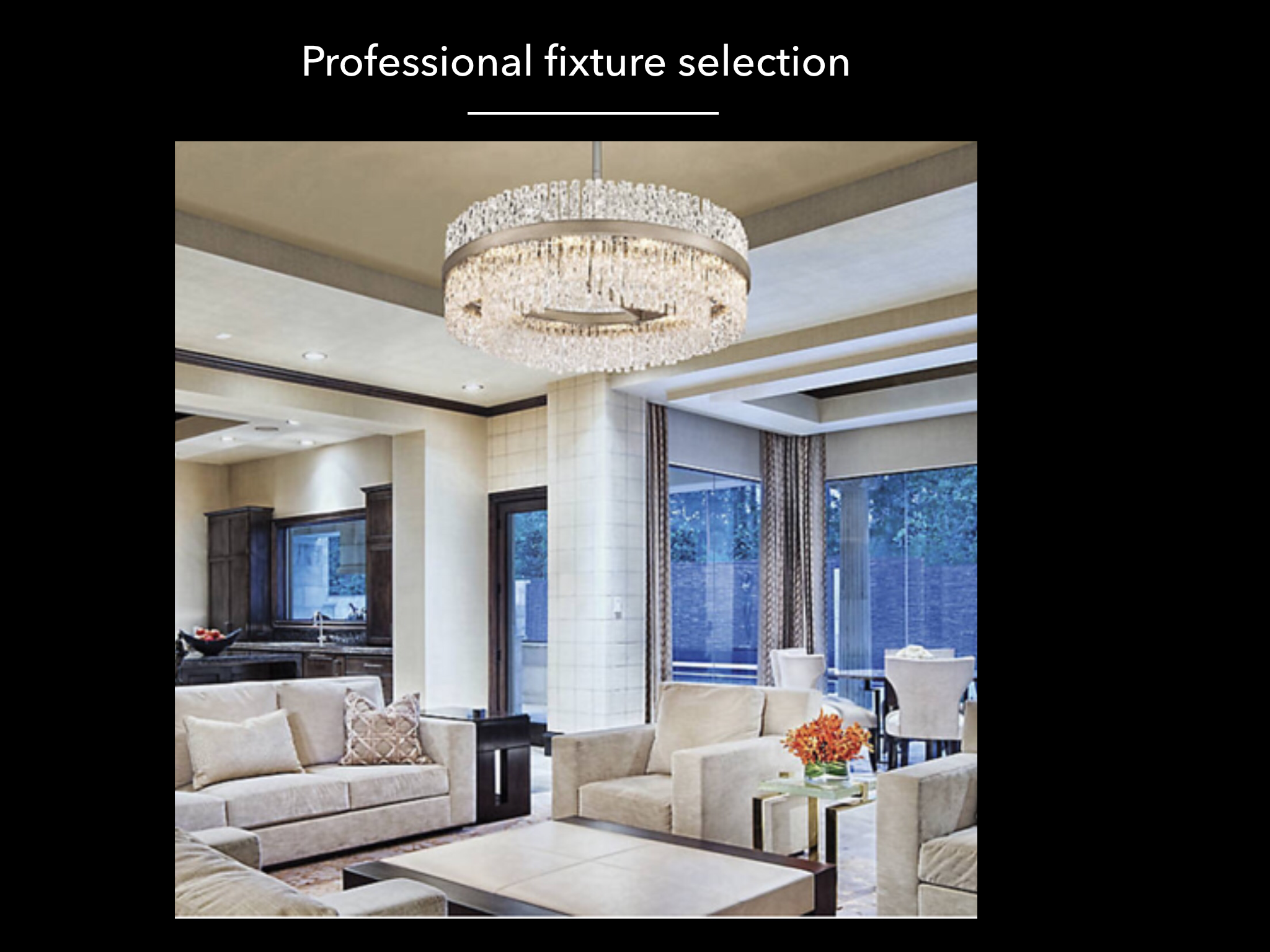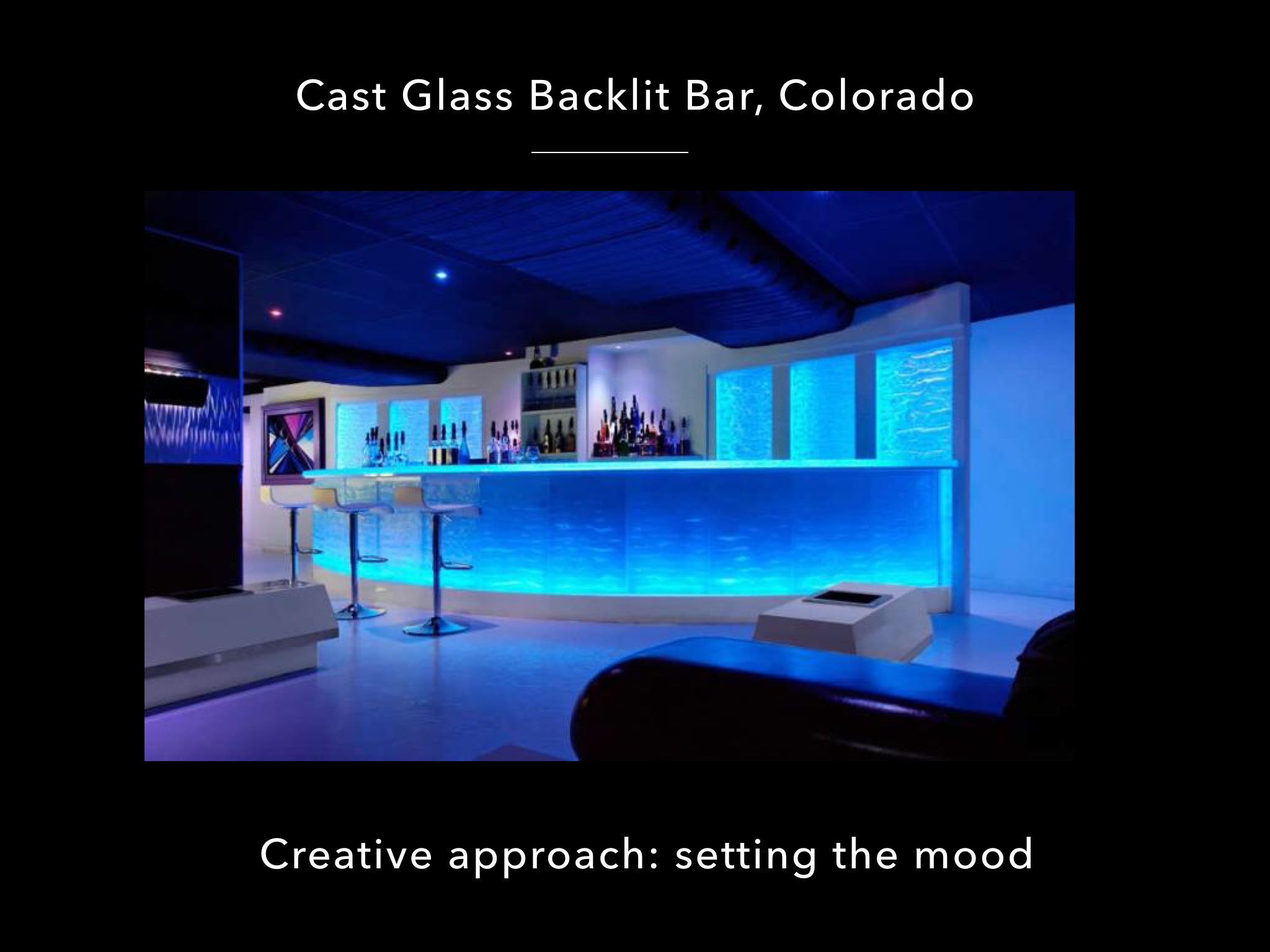THE PURPOSE OF A GOOD LIGHTING DESIGN SHOULD:
Create a "Welcome Mat" using light.
Increase pride of ownership.
Stimulate a sense of excitement when you turn on your lighting system.
Make lighting the centerpiece of your home environment.
Increase visual space and the desire to use the outdoor garden or room.
WHEN DESIGNING A LIGHTING SYSTEM:
Use natural light. Natural light should be utilized whenever possible for a number of reasons. It’s more economical, generally more pleasant, and if you’re in the middle of a major remodel, or designing a new home, there are some stunning uses of natural light that can easily be incorporated into your overall architectural design.
Study the major uses of lighting in the environment. There’s three levels of lighting that can be referred to as: Task lighting, accent lighting, and ambient lighting. Task lighting focuses on specific work areas, such as countertops and tables. Accent lighting illustrates areas of your home or office, drawing special attention, to such areas as: important architectural elements, artwork, and stairways. Ambient lighting refers to natural or artificial lighting that is created by: indirect cove lighting, desk lamps, wall sconces, and torchieres.
Think about different types of lighting and where they will work best in your environment. Recessed lighting is all the rage and works for just about any application. It can also be used as task, accent, or ambient lighting, depending on the specific needs of the area. Track lighting or box lighting (rectilinear ceiling mounted boxes with 2,3,4, or more spot lights that are hidden up in the box’s cavity) are popular these days, and are especially effective for accent lighting when focusing on certain areas, architectural designs, or artwork.

